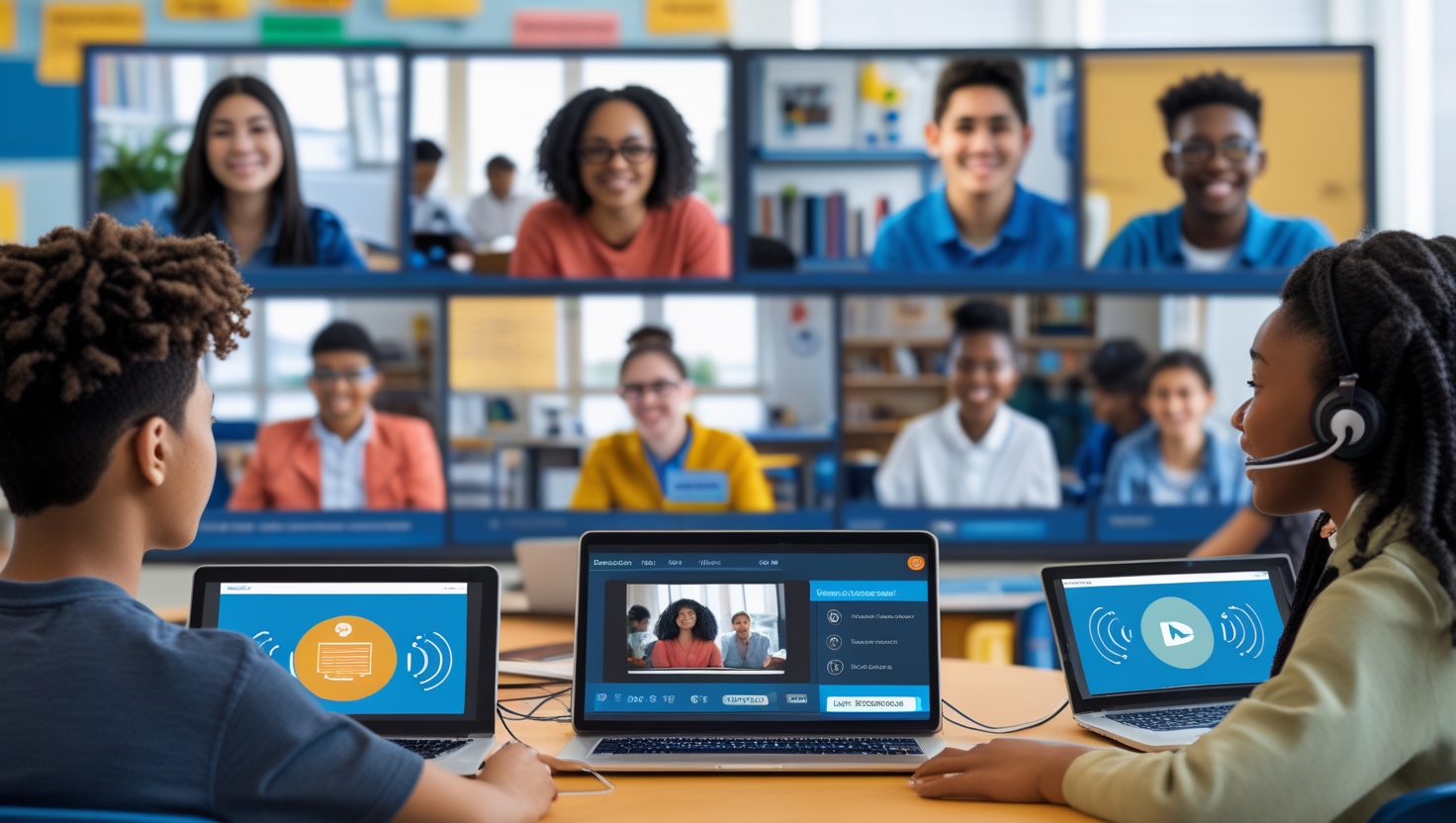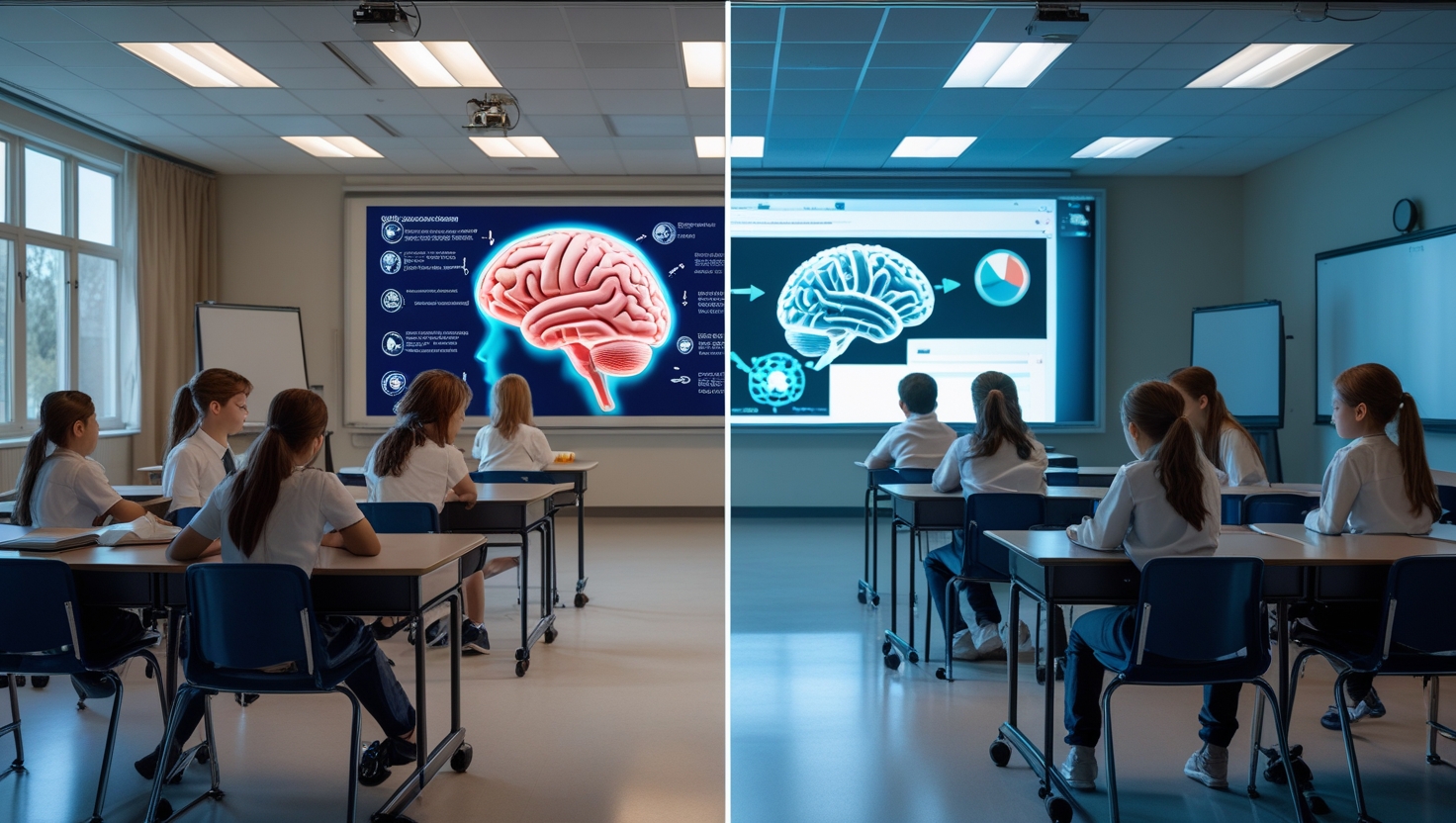In our increasingly screen-based world, visual learning has taken center stage in educational approaches. From animated explainer videos to interactive infographics, visual content dominates digital learning spaces—but what does cognitive science tell us about the effectiveness of these approaches, and how can we harness visual learning while avoiding its potential pitfalls?
This article explores the science behind visual learning, examines its benefits and limitations, and offers evidence-based strategies for maximizing its effectiveness in diverse educational contexts.
The Science of Visual Processing
To understand visual learning's effectiveness, we must first recognize how our brains process visual information:
The Dual-Coding Advantage
According to Paivio's dual-coding theory, information encoded both verbally and visually creates multiple retrieval pathways in memory. Recent neuroscience research supports this, showing that:
- Visual and verbal information are processed along distinct but interconnected neural pathways
- When information is presented through multiple modalities, overall cognitive processing capacity can increase
- Visual memory systems often demonstrate superior retention for certain types of information
- The connections formed between visual and verbal representations strengthen conceptual understanding
- Multimodal encoding creates redundancy that supports long-term retention
Processing Efficiency
Our visual systems have evolved remarkable efficiency:
- The human brain can process visual information in as little as 13 milliseconds
- Up to 30% of our cortex is dedicated to visual processing (compared to 8% for touch and 3% for hearing)
- We can recognize and categorize images far more rapidly than we can process equivalent text descriptions
- Visual patterns and relationships can be perceived holistically rather than sequentially
- Our working memory can maintain approximately 4-5 visual elements simultaneously
Emotional Connection
Visual content engages emotional processing centers:
- Visual stimuli have more direct pathways to emotional processing centers in the limbic system
- Emotional arousal enhances attention and memory consolidation
- Visual narratives can generate empathy and perspective-taking more readily than text alone
- Aesthetic responses to visual design influence motivation and engagement
- Visual metaphors can create powerful emotional shortcuts to complex concepts
Cognitive Benefits of Visual Learning
Research demonstrates several specific advantages of well-designed visual learning approaches:
Complex Concept Comprehension
Visual representations excel at making complex ideas accessible:
- Abstract concepts become concrete through visual metaphors and analogies
- Spatial relationships and structures are more intuitively understood when visualized
- Dynamic processes are clarified through animation and motion graphics
- Systems thinking is supported by visual mapping of relationships and interactions
- Micro and macro perspectives can be integrated through visual zooming techniques
Cognitive Load Management
Well-designed visuals can reduce cognitive burden:
- Chunking information into visual patterns helps overcome working memory limitations
- Visual organization creates clear information hierarchies
- Spatial arrangements can offload memory requirements to the visual field
- Symbolic representations reduce the need for lengthy verbal descriptions
- Color, shape, and size coding add information dimensions without increasing complexity
Enhanced Recall
Visual elements improve memory formation and retrieval:
- The picture superiority effect shows that concepts presented as images are remembered better than words alone
- Visual hooks provide powerful retrieval cues
- Distinctive visual elements enhance memory discrimination
- Spatial memory systems can be leveraged for information organization
- Visual storytelling creates narrative structures that support recall
Accessibility for Diverse Learners
Visual approaches can create more inclusive learning experiences:
- English language learners benefit from visual support that transcends language barriers
- Visual explanations provide alternative pathways for students with reading difficulties
- Different learning preferences are accommodated through multimodal presentation
- Complex concepts can be scaffolded visually for students with varying background knowledge
- Visualization techniques can benefit students with certain learning disabilities
The Digital Visual Learning Landscape
Today's educational environment offers unprecedented visual learning opportunities:
Video-Based Learning
Educational video has evolved far beyond simple recorded lectures:
- Microlearning videos focus on single concepts with precise visual explanations
- Animation and motion graphics make invisible processes visible
- Interactive video allows for personalized pacing and exploration
- Virtual field trips provide immersive visual experiences of inaccessible locations
- Instructor presence videos combine personal connection with visual explanation
- Visualization techniques bring abstract data and concepts to life
Interactive Visualizations
Static visuals have evolved into manipulable, responsive experiences:
- Data visualization tools allow learners to explore relationships dynamically
- Simulations provide visual models of physical and abstract systems
- Augmented reality overlays visual information onto real-world contexts
- Virtual reality creates immersive visual environments for experiential learning
- Interactive diagrams respond to learner input and exploration
Visual Communication Tools
Students increasingly express learning through visual creation:
- Digital mind mapping and concept mapping tools
- Infographic and visual design platforms accessible to beginners
- Video creation and editing tools for student-produced explanations
- Visual note-taking applications that combine text, drawing, and image
- Collaborative visual workspaces for group sense-making
Visual Social Learning
Learning communities increasingly organize around visual content:
- Visual discussion forums where ideas develop through image sharing
- Collaborative annotation of visual materials
- Video-based teaching and learning communities
- Visual portfolio platforms for demonstrating learning
- Image-centric knowledge bases and resources
Challenges and Limitations
Despite its benefits, visual learning presents important challenges to consider:
Cognitive Overload Risks
Poorly designed visual content can overwhelm rather than enhance learning:
- Decorative visuals can distract from core content ("seductive details effect")
- Overly complex visualizations may exceed processing capacity
- Rapid visual transitions can prevent adequate processing
- Multiple competing visual elements can fragment attention
- Animation can overwhelm if pacing isn't carefully controlled
Superficial Processing
Visual appeal doesn't guarantee deep learning:
- Visually engaging content can create an "illusion of understanding"
- Passive viewing may not activate necessary cognitive processes
- Aesthetic quality can be mistaken for educational value
- Visual fluency can lead to overconfidence in comprehension
- Elaborate visuals might be remembered while key concepts are forgotten
Accessibility Concerns
Visual emphasis can create new barriers:
- Students with visual impairments need alternative access methods
- Some forms of visual processing difficulties may be exacerbated
- Cultural differences affect visual interpretation and symbolism
- Technical limitations can prevent access to high-bandwidth visual content
- Overreliance on visual learning may neglect development of other skills
Production Challenges
Creating effective visual learning materials requires:
- Specialized skills that many educators are still developing
- Significant time investment compared to text-based materials
- Technical tools that may have steep learning curves
- Understanding of visual design principles and cognitive science
- Resources for production that may exceed available budgets
Evidence-Based Strategies for Effective Visual Learning
Research points to several principles that maximize the benefits while minimizing the pitfalls of visual learning:
Meaningful Integration
Visuals should serve clear pedagogical purposes:
- Use visuals that directly support learning objectives rather than decorative elements
- Ensure spatial and temporal contiguity between related visual and verbal elements
- Integrate visual and verbal explanations rather than presenting them separately
- Signal important elements through visual cues like arrows, highlighting, or zoom
- Apply consistent visual systems across learning materials
Cognitive Activation
Design visual learning that requires mental engagement:
- Incorporate prediction questions before revealing visual explanations
- Use visual comparison tasks that require analytical thinking
- Include visual completion activities where students supply missing elements
- Implement drawing tasks that force conceptual visualization
- Design visual problem-solving scenarios that apply concepts
Progressive Complexity
Build visual understanding through careful sequencing:
- Begin with simplified visuals before introducing comprehensive representations
- Use segmenting to break complex visual explanations into digestible chunks
- Provide pre-training on visual components before showing integrated systems
- Layer information progressively to prevent overwhelming
- Offer scaffolded support for interpreting complex visualizations
Multimodal Design
Optimize the relationship between visual and other modes:
- Prefer audio narration over on-screen text for explaining animations
- Remove redundant text when narration and visuals are sufficient
- Provide explanatory audio for complex visuals rather than text captions
- Create complementary rather than redundant relationships between modes
- Apply consistent signaling systems across modalities
Learner Control
Allow personalization of the visual learning experience:
- Provide pause, rewind, and speed control for animated content
- Offer zoom and focus features for complex visuals
- Include options for variable levels of visual detail
- Allow learners to toggle between different visual representations
- Support user-directed exploration of visual information
Future Directions in Visual Learning
Several emerging trends are reshaping visual learning possibilities:
Adaptive Visualization
Tomorrow's visual learning will respond to individual needs:
- AI-powered systems that adjust visual complexity based on learner responses
- Personalized visual examples that connect to individual interests and experiences
- Adaptation of visual presentation based on learning style and preferences
- Real-time modification of visual pacing based on attention and comprehension signals
- Customized visual scaffolding that fades as mastery develops
Extended Reality Learning
Immersive technologies are creating new visual learning paradigms:
- Virtual reality environments that create embodied visual-spatial learning experiences
- Augmented reality overlays that connect visual learning to real-world contexts
- Mixed reality collaborative spaces for visual problem-solving
- Haptic feedback systems that add tactile dimensions to visual learning
- Location-based visual learning experiences tied to physical spaces
Visual Data Literacy
As data visualization becomes ubiquitous, education must respond:
- Developing critical evaluation skills for visual data representations
- Teaching creation of effective data visualizations as a core literacy
- Building awareness of how visual design choices influence data interpretation
- Fostering ability to identify misleading visual representations
- Cultivating comfort with interactive exploration of complex datasets
Multimodal Assessment
Evaluation methods are evolving to include visual demonstration of learning:
- Performance assessments in virtual visual environments
- Visual portfolio approaches that demonstrate conceptual understanding
- Assessment of student-created visual explanations and models
- Visual problem-solving scenarios that require application of knowledge
- Analysis and critique of visual information as demonstration of literacy
Conclusion
Visual learning in the digital age offers tremendous potential for enhancing understanding, engagement, and accessibility—but realizing these benefits requires thoughtful application of cognitive science principles and awareness of potential limitations.
As we navigate an increasingly visual educational landscape, the most successful approaches will be those that treat visual elements not as decorative additions but as integral components of well-designed learning experiences. By combining the science of visual processing with intentional instructional design, we can harness the power of visual learning while avoiding its pitfalls.
The future of visual learning will likely see greater personalization, immersion, and interactivity, accompanied by increased emphasis on visual literacy as both a learning outcome and a pathway to understanding. By embracing these developments while maintaining focus on fundamental learning principles, educators can use visual approaches to create more effective, engaging, and inclusive learning experiences for all students.




3 Comments
Leave a Comment